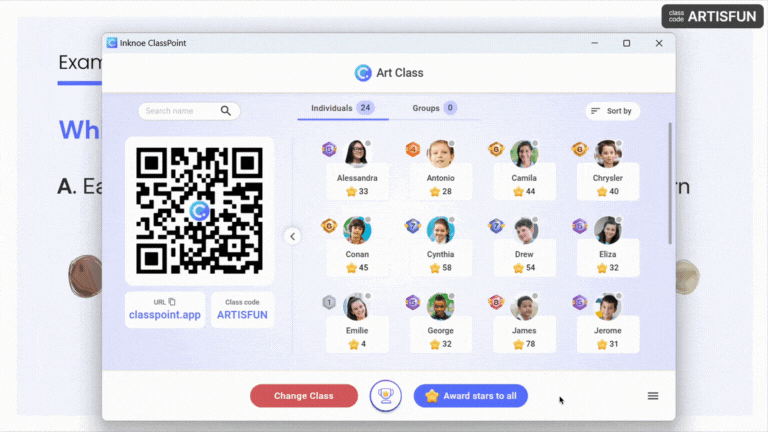Let’s say your student just had a eureka moment. Maybe they figured out a missing puzzle piece or came up with a creative solution to a problem. They might think the job is done. But really, it’s only just beginning.
This is where you step in. As an educator, your role is to help them take that discovery further by defining their thinking, explaining it clearly, and backing it up with solid argumentation.
So, how exactly do you do that? One place to start is with the Claim, Evidence, Reasoning (CER). According to this model, an explanation can be broken down into:
- Claim: A statement that answers the question
- Evidence: Any observation, information, or data from the student’s experiment or research
- Reasoning: Explanation showing how the evidence supports the claim
Here’s what that might look like in a student response: Plants grow better in sunlight because they need it to make food (Claim). In our experiment, the plant in sunlight grew 10 cm taller than the one in the dark (Evidence). Sunlight is essential for photosynthesis, which helps plants produce energy and grow (Reasoning).
Ready to guide your students on how to write using the CER format? Let’s explore a quick introduction in the next section.
Introducing CER Writing to Students
To help students understand how Claim, Evidence, and Reasoning come together, it helps to anchor the format in a real, curiosity-driven question. One great topic to start with? Volcanoes.
You can begin by asking your students a guiding question like: “Why do volcanoes erupt?”
Then, walk them through how to build a complete CER response.
Sample Student Response Using CER:
- Claim: Volcanoes erupt when pressure builds up from magma beneath the Earth’s surface.
- Evidence: Scientists often detect small earthquakes and rising gas levels before an eruption.
- Reasoning: These signals show that magma is moving upward and pressure is increasing. When the pressure becomes too much, the magma breaks through the surface, leading to an eruption.
Practice makes perfect, and the same holds true for your students. Think of yourself as their compass: you’re guiding them, modeling the process, and helping them navigate the CER format with clarity and purpose.
But it doesn’t stop at the basics! Let’s dive deeper into how to really teach CER in the next section.
1. Scaffold the CER Process with Intention
“I do, we do, you do” forms the backbone of effective scaffolding. Start by modeling how to write a CER response, step by step. For example, you can pose a question like: Why does ice float on water?
Then, model the response aloud.
Claim: Ice floats because it is less dense than liquid water.
Evidence: In our lab, the ice cube stayed on the surface while denser objects sank.
Reasoning: Substances with lower density float in substances with higher density, which explains why ice remains on top.
Next, guide students through the process together. Ask another question like: Why do shadows change size during the day?
Work as a class to build a response:
Claim: Shadows change size because the position of the sun changes.
Evidence: Shadows are shorter at noon and longer in the morning and evening.
Reasoning: The angle of sunlight affects how long a shadow appears. As the Sun moves, the angle changes, which causes the shadow to grow or shrink.
Finally, let students try it on their own with a question like: Why do plants grow better in sunlight?
This gradual release helps them build confidence and independence in using the CER format effectively.
Looking for more strategies? Here are 10 Must-Try Scaffolding Strategies to Help Students Master Any Skill in the Modern Classroom.
2. Make Practice Interactive (Not Just Another Quiz)
The key to making CER stick is consistent practice. Instead of going the usual route with your traditional assessments, why not make it more engaging with interactive tools?
One tool that does that well is ClassPoint. It allows you to collect student responses directly from your PowerPoint presentation in real-time. You can ask a question like: Why does the Moon have phases? Then, use the Short Answer activity to have your students submit their claim, evidence, and reasoning during the lesson. This keeps them involved and gives you immediate insights into their understanding.

In addition, you can combine sentence stems with a fill-in-the-blank activity to prompt deeper thinking. Try providing something like this:
Claim: I think the Moon has phases because ___.
Evidence: One piece of evidence is ___.
Reasoning: This supports my claim because ___.
This type of quick activity helps reinforce structure and gives your students space to process their ideas. Other low-prep options include:
- Short daily warm-ups (e.g., “Why do we see lightning before hearing thunder?”)
- CER card sorts where students match claims, evidence, and reasoning
- Peer feedback sessions using a checklist
Aside from interactive quizzes, you can gamify your students’ learning experiences by rewarding their answers and hard work with stars, letting them level up and earn badges, and allowing them to climb up the leaderboard ranks.

3. Use Socratic Inquiry
Aside from writing, students sharpen their ability to make a claim and defend sound arguments through dialogue. These conversations, whether with you, their classmates, or in small groups, help build a strong foundation for reasoning. Dialogue also invites critique and reflection. It helps students identify gaps and weak points in their thinking, strengthen their line of reasoning, or support their peers in improving their explanations.
Enter Socratic inquiry, a powerful method for preparing your students to write CER responses. You can try this approach after a hands-on activity or simple classroom demo, such as a balloon inflating from a baking soda and vinegar reaction. Instead of jumping into writing, guide your students through what happened using open-ended questions that prompt deeper thinking.
New to Socratic-based inquiry? Check out this Socratic Seminars 101: A Practical Guide to Engaging Student-Led Discussions.
Socratic inquiry thrives on curiosity and purposeful questioning. Your role is to guide the discussion, but the real impact happens when students begin questioning each other, challenging ideas, and exploring more than surface-level answers. Here’s how to frame it using CER:
- Claim: What do you think caused the balloon to rise? Encourages students to take a clear stance based on what they observed.
- Evidence: What did you observe during the experiment? Helps students focus on specific, observable details that support their claim.
- Reasoning: How does that explain your answer? What science idea helps support this? Pushes students to connect the evidence to the claim using logical or scientific principles.
As students respond, they begin forming a complete explanation step by step. This process works well because it is:
- Low pressure: Students talk through ideas before being asked to write, which helps ease anxiety.
- Collaborative: Classmates build on each other’s responses, leading to stronger, more refined reasoning.
- A helpful transition to writing: Students organize their thinking verbally, so writing feels more manageable.
Once the discussion has taken shape, show students how their ideas already follow the CER structure. You can:
- Write responses on the board under the headings Claim, Evidence, and Reasoning This provides a visual model of how the parts connect.
- Have students turn the discussion into writing They’ll realize they already have the content—they just need to put it into words.
- Remind them they’ve already done the thinking This builds confidence and reduces hesitation around writing.
When CER begins with conversation, students are more invested and more prepared. Socratic inquiry helps them think critically, listen actively, and communicate their ideas with clarity and purpose.
4. Utilize Ready-to-Use Resources
Both teachers and students have limited time and mental bandwidth to master CER in one sitting. Hence, it’s important to provide ready-to-use resources that your students can work on independently, whether at home or during quiet moments in class.
Think: printable graphic organizers, peer review checklists, and a simple scoring rubric that takes only a few minutes to explain. These tools help turn CER from a one-time lesson into an ongoing habit.
CER Graphic Organizer Template
Teach CER writing easily to your students with this template powered by ClassPoint!
Developing a strong claim, evidence, and reasoning is more than just a classroom exercise. It is a skill students will carry with them wherever they go. Whether they are preparing for future careers, working in teams, or engaging in critical conversations about real-world issues, CER gives them the structure to communicate clearly and think critically in any setting.
FAQs
What is the Claim Evidence Reasoning (CER) framework?
CER is a structured approach to writing and thinking critically. It helps students form a claim (a statement answering a question), provide evidence (supporting facts or data), and explain the reasoning (how the evidence supports the claim). This method is commonly used in science but can be applied across subjects to encourage critical thinking and clear communication.
Why should I teach CER in my classroom?
Teaching CER helps students develop essential reasoning skills. It encourages them to think logically, justify their claims with evidence, and connect ideas in a structured way. This process not only improves their writing but also prepares them for real-world conversations and problem-solving, both inside and outside the classroom.
How can I introduce CER to my students?
Start by modeling a CER response for a familiar topic or experiment. Walk through each component with your students, and engage them in a discussion before moving to written responses. Use hands-on activities or real-life examples to make CER more relatable and interactive.
What resources can help my students practice CER?
There are many ready-to-use resources that can support CER practice. Consider printable student organizers, peer review checklists, and rubrics that simplify grading. These tools allow students to focus on improving their arguments and reasoning, both in the classroom and independently at home.
Can CER be used outside of science?
Yes! While CER is commonly used in science, it can be applied across subjects. In English, students can use CER to craft persuasive essays or analyze texts. In history, they can build arguments about events or historical trends. The skills involved in CER—making claims, supporting them with evidence, and explaining reasoning—are universally useful for critical thinking and communication.

